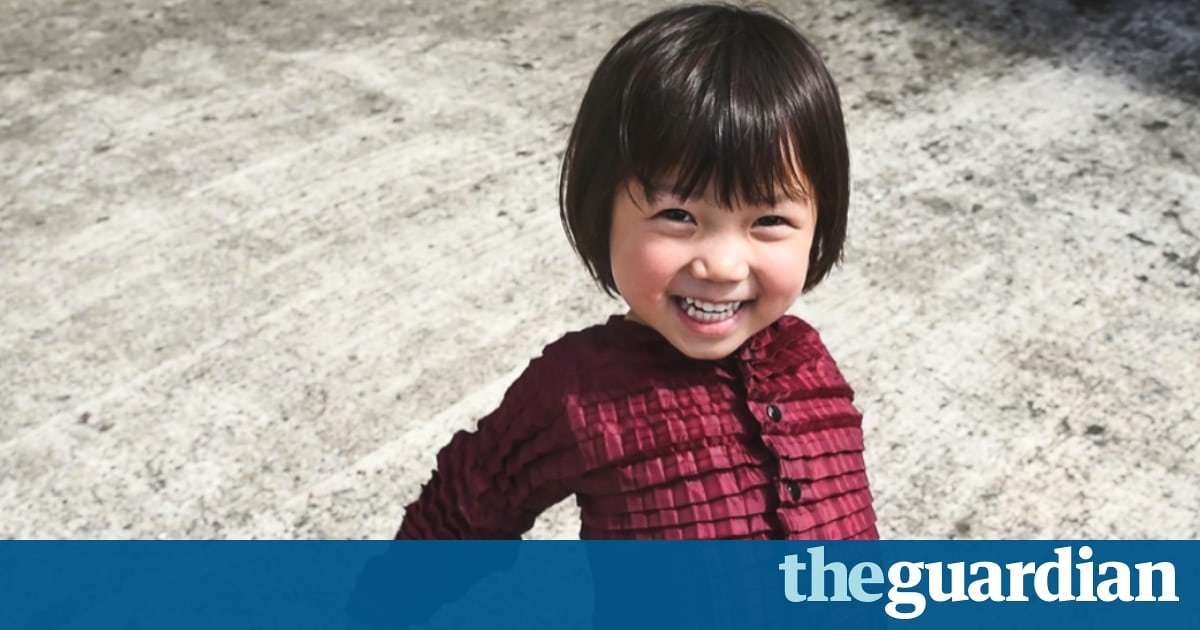An origami-inspired range of children’s clothing made from a durable pleated fabric that expands to fit growing babies and toddlers has won its 24-year-old designer a prestigious James Dyson award.
Ryan Yasin devised the material using scientific principles he studied for his aeronautical engineering degree, after noting the lack of sustainability in the clothing industry and being frustrated by how quickly his baby niece and nephew outgrew garments he bought for them.
The London-based postgraduate student aims to make so-called Petit Pli “the most advanced kids’ clothing in the world”. It is made from distinctive pleated lightweight fabric which is waterproof, machine washable and recyclable, with all garments fitting the three-month to three-year age group.
Most children grow by seven sizes in their first two years, and (according to a recent survey by Aviva) parents spend an average of £2,000 on clothing before their child reaches the age of three. As well as the high cost and limited lifespan, mass production of garments places huge pressure on the environment through waste, water consumption and carbon emissions.
Facebook Twitter Pinterest Ryan Yasin, designer of Petit Pli clothing range that grow with your child. Photograph: Paul Grover/James Dyson Award
Yasin set out to combine technology with textiles in order to fashion durable and practical garments for youngsters to take them through their initial “growth spurt”. The babygrow, trousers and tops he has so far created resemble junior versions of sought-after clothing by legendary Japanese designer Issey Miyake.
Petit Pli works by employing the so-called negative Poisson’s ratio, which Yasin studied while at London’s Imperial College. When stretched, materials that have this ratio – known as auxetics – become thicker and can expand in two directions at the same time. The phenomenon is already used in stents and biomedical implants. Yasin has to date developed more than 500 prototypes for Petit Pli and plans to use his £2,000 prize money to continue discussions with potential investors and expand the business. Yasin says he is in talks with a major UK retailer and hopes the first clothing will go on sale in the UK within months.
Facebook Twitter Pinterest The clothes are made to stretch to fit children as they grow between three and 36 months old. Photograph: Courtesy of Petit Pli
“It’s just great to have that backing and recognition of my solution,” he said. “The prize money is an added bonus, but I know how I will use it. In addition to supporting my R&D, it will help me form an interdisciplinary team of experts to take Petit Pli to the next level: putting it in the hands of parents worldwide and making a tangible difference to the way we consume resources in the fashion industry.”
Yasin has captured auxetic properties in Petit Pli through the use of permanent pleating. The pleats move in both directions, either folding together or expanding, and allowing the garment to move with the child. Heat treatment fixes these properties permanently in place, even through the wash cycle; the garments are designed to be long-lasting and can fold down small enough to tuck in your pocket.
Yasin says he will aim to keep the garments at a competitive price while ensuring everyone along the supply chain is paid ethically.
His invention will now be entered into the international running for the final leg of the James Dyson Award – announced in October – which will give the overall worldwide winner a further £30,000 in prize money.
The James Dyson award operates in 23 countries, and is open to university level students and recent graduates studying product design, industrial design and engineering. It recognises and rewards imaginative design solutions to global problems with the environment in mind.

crusoe on September 7th, 2017 at 13:49 UTC »
The problem is opportunity cost. Will they be cheap enough for the poor to afford up front in a one time payment vs buying over time for cheaper clothes though it costs more in total eventually.
Buy one shirt for $50 and go hungry or buy 20 at $5 over time.
5k3k73k on September 7th, 2017 at 12:58 UTC »
Several years ago my wife bought a shirt that was pleated like this. If I remember correctly it was billed as "one size fits all". It looked too small but the pleats were loose enough to expand (including the arm length). Both my wife and youngest daughter where able to wear the shirt.
I don't know if it used "negative Poisson’s ratio" but it looked and functioned just like clothes pictured (except it was blue).
EDIT:
Thanks /u/ShitOnRickard5 - I think this is the exact shirt.
Lirkmor on September 7th, 2017 at 12:58 UTC »
Awesome idea. I hope the fabric will be able to survive that whole 3 years of wear, tear, and filth from children without needing replacement.